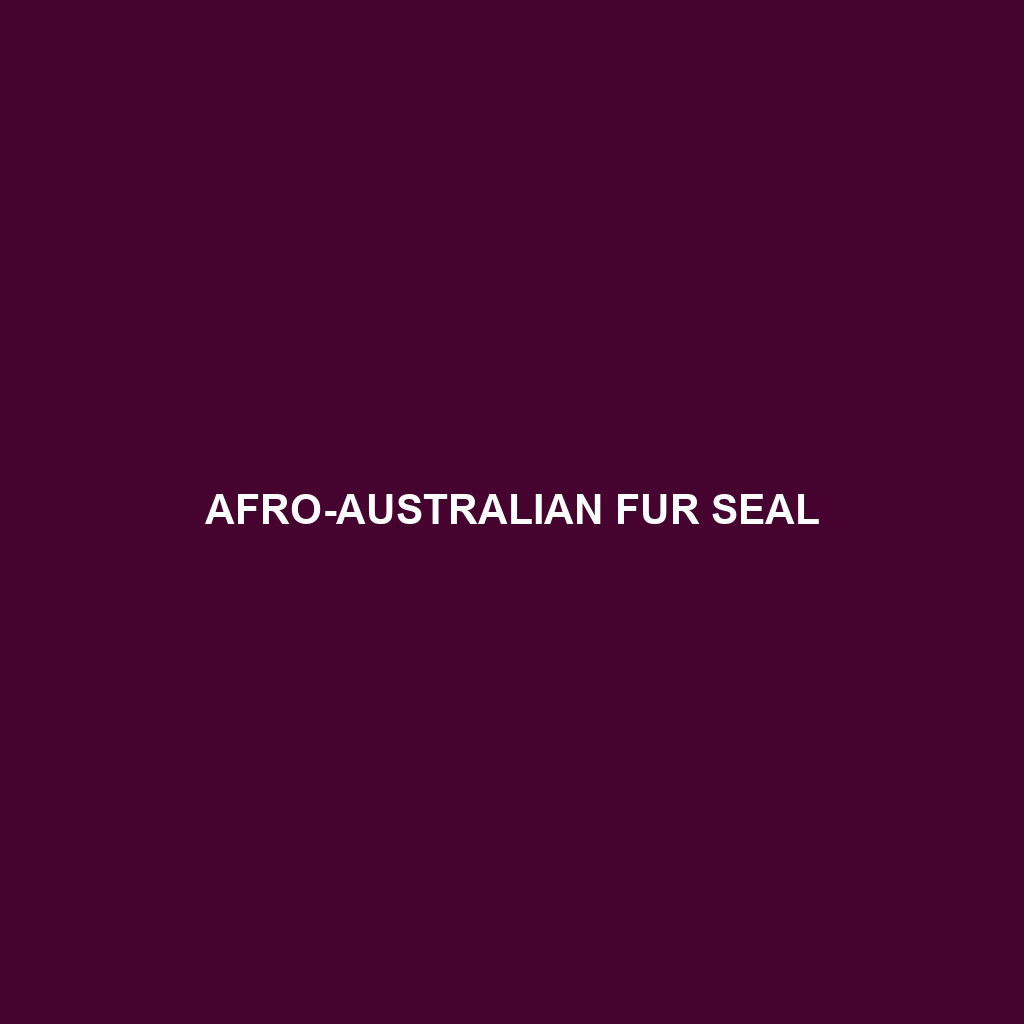Juan Fernandez Fur Seal
Common Name: Juan Fernandez Fur Seal
Scientific Name: Arctocephalus philippi
Habitat: The Juan Fernandez Fur Seal is primarily found on the Juan Fernández Islands, located off the coast of Chile. These seals inhabit rocky shores and beaches, particularly on Robinson Crusoe and Alejandro Selkirk Islands. They prefer areas with steep cliffs and abundant marine resources, offering safe breeding and pupping sites. The cooler waters of the Humboldt Current provide a rich feeding ground, supporting their survival in this unique ecosystem.
Physical Characteristics: Juan Fernandez Fur Seals are medium-sized pinnipeds, with adult males typically measuring between 2.2 to 2.5 meters in length and weighing 100 to 180 kg. Females are smaller, averaging about 1.5 to 2.0 meters and weighing around 50 to 80 kg. They possess a distinctive dark brown fur, with lighter undersides and a thick layer of blubber for insulation. Their large, expressive eyes and elongated snouts give them a charismatic appearance, making them a subject of interest in marine biology and wildlife tourism.
Behavior: These seals exhibit both terrestrial and aquatic behaviors. They are social animals, often seen in groups on shorelines, where they engage in vocalizations and playful interactions. In the water, they are agile swimmers, known for their acrobatic displays. Juan Fernandez Fur Seals are also known for their intense maternal care, with mothers nursing their pups for several months while actively engaging in foraging trips to feed.
Diet: The diet of the Juan Fernandez Fur Seal predominantly consists of fish, squid, and crustaceans. They are skilled hunters, capable of diving to depths of up to 250 meters in search of food. Their feeding habits play a crucial role in the marine food web, as they help regulate fish populations and maintain ecosystem health. These seals primarily forage during the day but may also hunt at night.
Reproduction: Juan Fernandez Fur Seals breed between late summer and early autumn, with the peak pupping season occurring in September and October. Males establish territories to attract females, and after a gestation period of about 11 months, females typically give birth to a single pup. Mothers are highly protective and stay with their pups for weeks to ensure they gain the necessary strength and skills for survival.
Conservation Status: As of 2023, the Juan Fernandez Fur Seal is classified as Endangered by the International Union for Conservation of Nature (IUCN). Threats to their population include habitat degradation, climate change, and fishing-related hazards. Conservation efforts are focused on habitat protection and the establishment of marine reserves to safeguard this remarkable species.
Interesting Facts: The Juan Fernandez Fur Seal is one of the rarest fur seal species in the world, with population estimates suggesting only a few thousand remain in the wild. Their unique history is intertwined with maritime expeditions and the literary legacy of Robinson Crusoe, as they inhabit some of the same islands that inspired Daniel Defoe’s classic novel. Local folklore also describes these animals as protectors of the islands.
Role in Ecosystem: Juan Fernandez Fur Seals play a vital role in their marine ecosystem. As top predators, they help maintain the balance of fish populations and contribute to the overall health of marine habitats. Their presence indicates a productive marine environment, and they are an essential part of the biodiversity found within the Juan Fernández archipelago. Additionally, they serve as an important prey species for apex predators like sharks.
